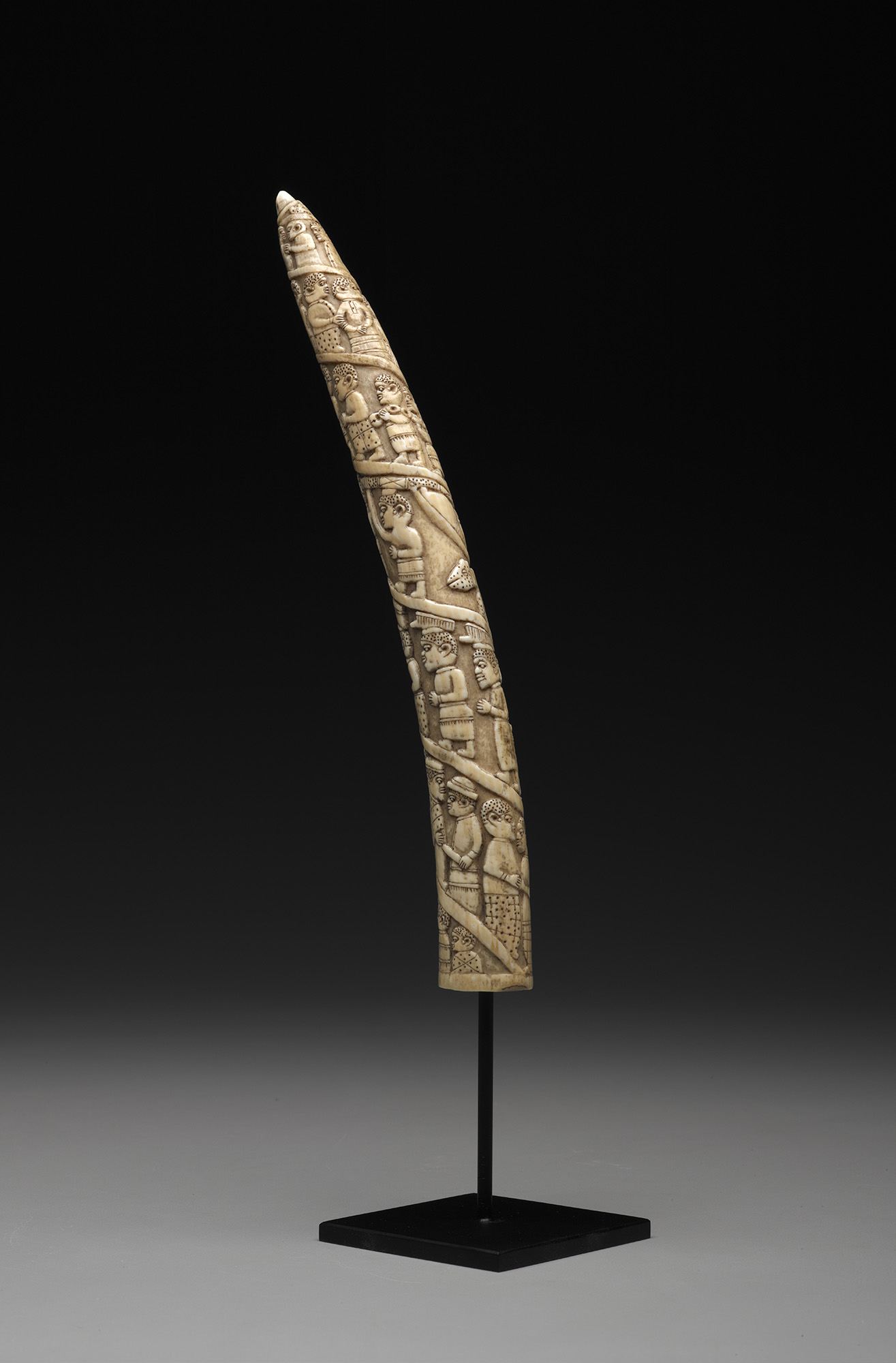During the 19th century, carved ivory tusks were commissioned for export to countries such as Portugal, Britain, France, Spain, Holland, India, and America. These “souvenirs,” often mementos of an African adventure, exhibited a combination of indigenous and foreign subjects and styles.
This Saturday, an interesting exhibit opens in the Museum concourse, Souvenir: A 19th Century Carved Tusk from the Loango Coast of Africa. While the exhibition explores African souvenir art in the 19th and 20th centuries, the highlighted work is a carved ivory tusk the Museum acquired in 1969. This is the first time the tusk has been on view since its acquisition.

Tusk with multiple scenes in relief, 19th-20th century, Dallas Museum of Art, The Clark and Frances Stillman Collection of Congo Sculpture, gift of Eugene and Margaret McDermott
Six hundred to one thousand of these tusks are estimated to exist in private collections and museums. An article in Smithsonian magazine refers to these tusks as “spirals of history,” as the images carved in relief often tell stories of transatlantic trade, manual laborers, rituals, and interactions with foreigners.
The spiral motif as well as the concept of conveying narrative through a spiral recall indigenous artistic traditions, while the subject matter of these tusks often incorporate foreign objects, subjects, or figures. Ultimately, these carved tusks are cultural hybrids.
I’m thinking of all the teaching possibilities related to cultural hybridity. In a recent discussion with colleagues about the very personal and complex implications of defining one’s own “culture,” I am confident that many students could relate to this notion of cultural hybridity. It would be interesting to ask your students to consider their “culture.” Often we associate culture with ethnicity, but culture could also include age, gender, geographic location, religion, or political status. What could an exercise about exploring and defining the various elements of one’s culture look like? For example, you might ask students to design a souvenir about the various cultures that affect their day to day actions and decision-making. What would their souvenir look like? How would they represent various cultures?
For teaching ideas and information about other works in our African collection, visit our our new online teaching materials related to our standing power figure (nkisi nkondi), helmet mask (mukenga), or rhythm pounder. Please comment and share with us the ways that you and your colleagues are incorporating ideas about cultural hybridity (and the fluid nature of culture) in your classrooms, and come check out Souvenir, on view until September.
Andrea V. Severin
Coordinator of Teaching Programs
References:
- Ballengee-Morris, C. Stuhr, P. Multicultural Art and Visual Cultural Education in a Changing World. Art Education. July, 2001.
- Bridges, N. “Kongo Ivories”. In Heilbrunn Timeline of Art History. New York: The Metropolitan Museum of Art. March, 2009.
Great post, Andrea! I really like the spiral narrative, it keeps the eye moving.